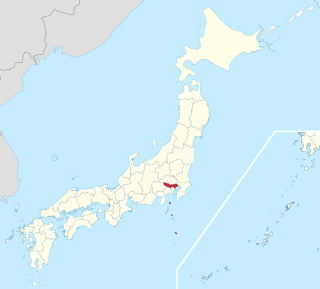
The National Diet is the national legislature of Japan. It is composed of a lower house, called the House of Representatives, and an upper house, the House of Councillors. Both houses are directly elected under a parallel voting system. In addition to passing laws, the Diet is formally responsible for nominating the Prime Minister. The Diet was first established as the Imperial Diet in 1890 under the Meiji Constitution, and took its current form in 1947 upon the adoption of the post-war constitution. Both houses meet in the National Diet Building in Nagatachō, Chiyoda, Tokyo.

House of Councillors elections were held in Japan on July 29, 2007. The date was originally to be July 22, but the ruling Liberal Democratic Party (LDP) decided in mid-June to extend the session of the House for a week to finish up legislative business; this step was criticised due to the short-term delay.

House of Councillors elections were held in Japan on 29 July 2001. They were the first national elections since Junichiro Koizumi became Prime Minister after Yoshiro Mori resigned in April 2001. The Liberal Democratic Party (LDP) and its election allies, were the major winner, provided Koizumi a strong mandates to move forward with his reform policies. The ruling coalition performed well, and regain their majority in the House of Councillors.

General elections were held in Japan on 25 April 1947. The Japan Socialist Party won 143 of the 468 seats, making it the largest party in the House of Representatives following the election. Voter turnout was 68%. It was the last election technically held under the Meiji Constitution in preparation for the current Constitution of Japan which became effective several days later on 3 May 1947. The upper house of the Diet was also elected by the people under the new constitution, the first ordinary election of members of the House of Councillors had been held five days before.

Tokyo at-large district is an electoral district of the House of Councillors in the National Diet. The district was created in 1947 by the new Constitution of Japan and sent 8 members to the House from 1947 until 2007. From 2007 until 2016, this district sent 10 members to the House, and from 2016 onwards, the district has sent 12 councillors to the House, making it by-far the largest constituency in the House of Councillors
The Hokkaido at-large district is a constituency of the House of Councillors in the Diet of Japan. It consists of the prefecture (dō) of Hokkai[dō] and is represented by six Councillors electing three at a time every three years by single non-transferable vote for six-year terms. In the election period from 2019 to 2022, Hokkaido's Councillors are :
Tokushima at-large district was a constituency of the House of Councillors in the Diet of Japan. It consists of Tokushima Prefecture and elects two Councillors, one every three years by a first-past-the-post system for a six-year term. In the first election in 1947, Tokushima like all districts used single non-transferable vote to elect both its Councillors in one election.

House of Councillors elections were held in Japan on 2 June 1959, electing half the seats in the House. The Liberal Democratic Party won the most seats. Kōji Harashima, who later become a founding member and the first chairman of Kōmeitō, was elected to the Diet for the first time as one of several Soka Gakkai-affiliated independents.

The Katayama Cabinet governed Japan under the leadership of Prime Minister Tetsu Katayama from May 1947 to March 1948. It was the first cabinet under the postwar constitution.

The Ryokufūkai was a political party in Japan.
The Fukushima at-large district is a constituency that represents Fukushima Prefecture in the House of Councillors in the Diet of Japan. It currently has three Councillors in the 242-member house.

The Dai-Niin Club was a political party in Japan.
The Ibaraki at-large district is a constituency that represents Ibaraki Prefecture in the House of Councillors in the Diet of Japan. It has four Councillors in the 242-member house.
The Chiba at-large district is a constituency that represents Chiba Prefecture in the House of Councillors in the Diet of Japan. It has six Councillors in the 242-member house.
The Niigata at-large district is a constituency that represents Niigata Prefecture in the House of Councillors in the Diet of Japan. Since July 2019, it has two Councillors in the 242-member house, a decrease from its previous contingent of 3.
The Yamanashi at-large district is a constituency that represents Yamanashi Prefecture in the House of Councillors in the Diet of Japan. It has two Councillors in the 242-member house.
The Shizuoka at-large district is a constituency that represents Shizuoka Prefecture in the House of Councillors in the Diet of Japan. It has four Councillors in the 242-member house.
The Kyoto at-large district is a constituency that represents Kyoto Prefecture in the House of Councillors of the Diet of Japan. It has four Councillors in the 242-member house.











